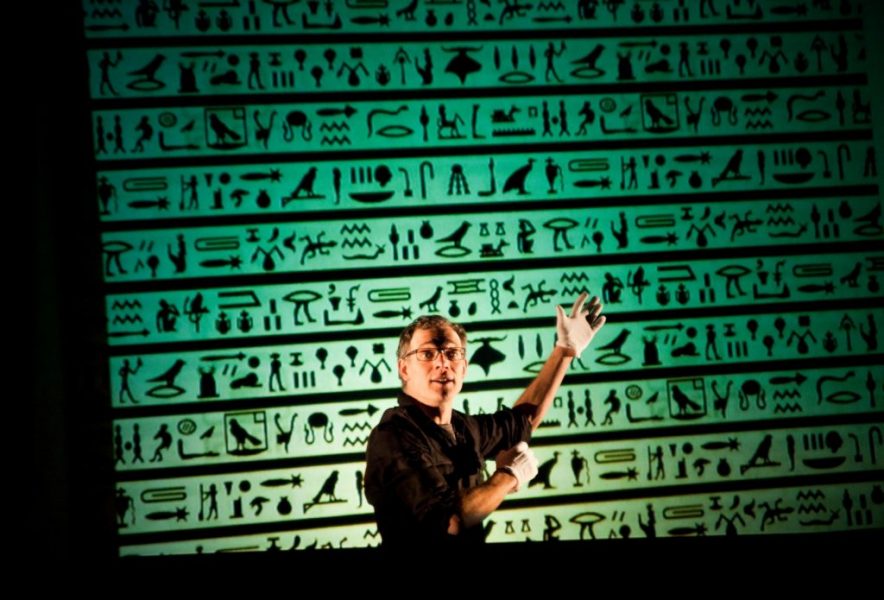For the first time in human history, the world’s population in cities has recently outnumbered rural populations. Cities, part of this year’s Manipulate Festival, is a lo-fi visual theatre exploration of this change, using a vast collection of inanimate objects including Playmobil, corn kernels, printed symbols and circuit boards to construct a series of imaginary cities and the human and physical constructs that inhabit them.
Presented by leading Quebecois company Théâtre de la Pire Espèce, the stage is set with two tables, two cameras and a screen. Around 25 cities are built by an actor before our eyes using his delightfully low-tech collection of objects, and projected to us live on screen in the UK premiere of this performance.
The beauty in Cities lies in the perspective these everyday objects are given when they appear on camera. On the table we merely see a circuit board, but under the camera’s gaze this everyday object transforms into a city of skyscrapers – bustling with all manner of human constructs and desires. The performance also includes the most stunning manipulation of a page of binary code perhaps ever, using a simple piece of corrugated glass.
The piece is written, directed and performed by Olivier Ducas, who invites us along for a trip through his personal collection of cities. In one city called “Lea”, Ducas plays the role of a scientist-cum-house-salesman, who informs us that we can build a house by simply pouring a solution into a plastic mould. When the mould has set, he pops out a familiar green Monopoly house from the resin. He then presents a brilliant street plan of green houses and red hotels on screen, creating the ultimate dream of suburban planning.
Ducas also explores the art of the collection, paying homage to Jean Baudrillard’s theories on the psychology of the collector. Perhaps this is the key to why the cities are named after women, like a collection in itself, as Baudrillard says that an avid collector renders his romantic relationships doomed.
Cities is a hugely enjoyable and visually impressive portrait of our urban condition, with each city questioning our constructed world and the social conditions we create.
